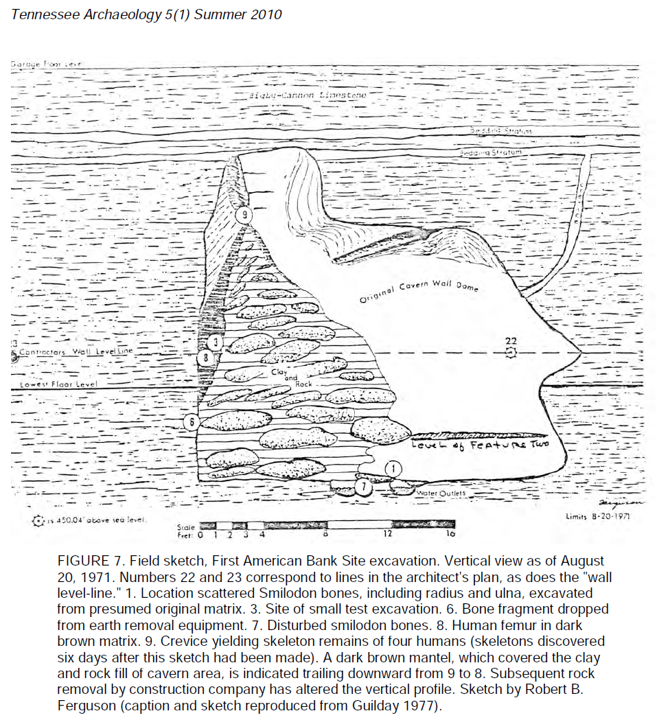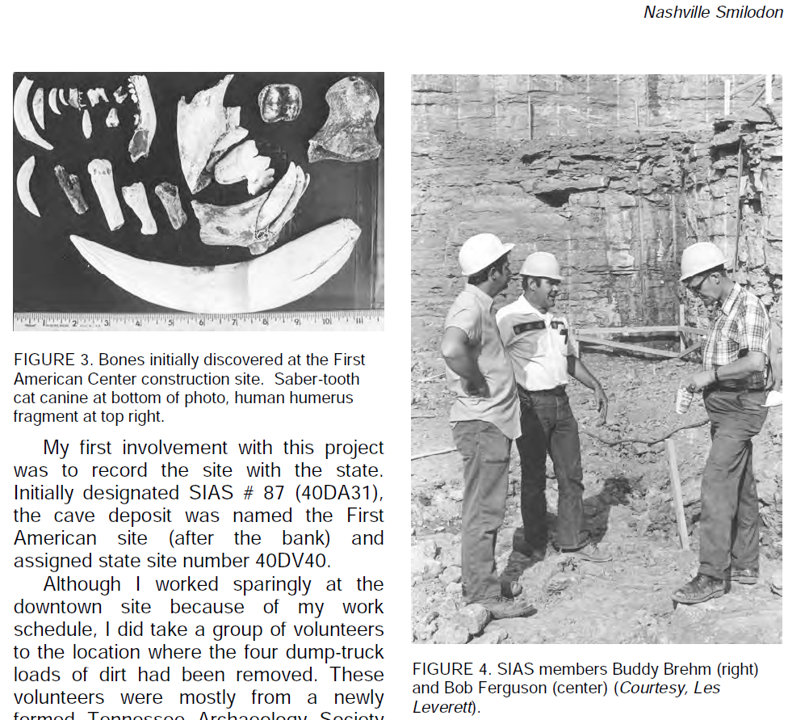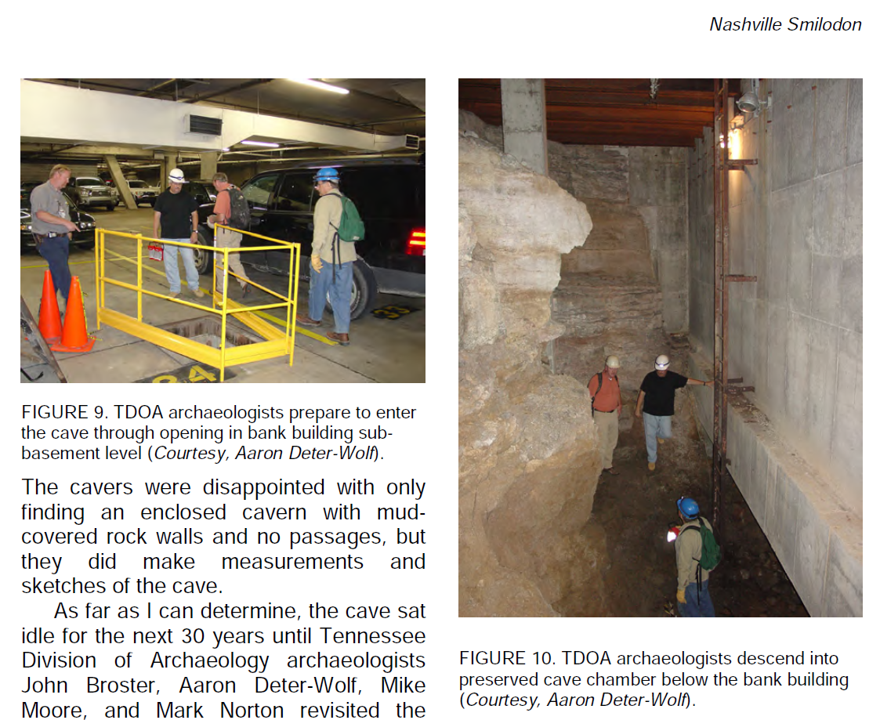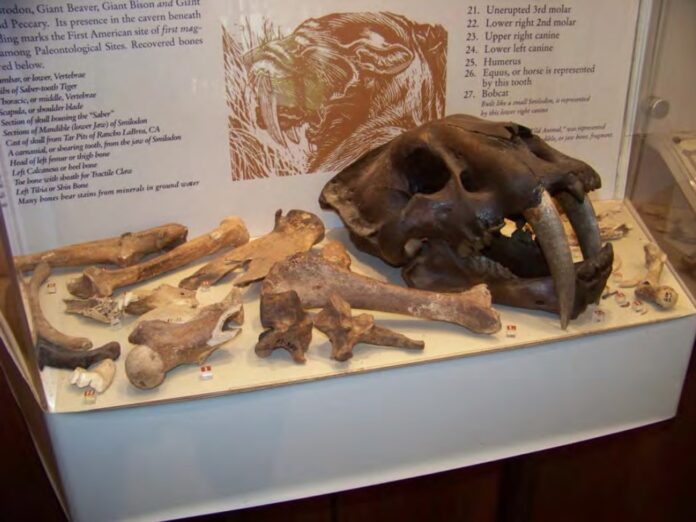How amazing is it to find out that many of the anachronisms of the Book of Mormon have gone by the wayside as we continue to find new information. Historians say there are no horses, cureloms, elephants and mastodons found in Mesoamerica. There are no animals for the law of Moses such as sheep, bullocks, goats, and doves in Mesoamerica. There is only Asian DNA in Mesoamerica, there is no barley or wheat in Mesoamerica. We know, we know. The Book of Mormon events happened in NORTH America.
In this article we even find Dinosaurs like the Sabertooth Cat. Here is my complete blog about Dinosaurs. Yes dinosaurs lived during the time of Adam and were all destroyed during the great world wide flood. May Mesoamericanist don’t believe this. They believe the earth is billions of years old and dinosaurs are millions of years old and Noah’s flood was a myth. I believe the scriptures literally and spiritually. Adam was put on earth in about 4000 BC there was a real flood about 2400 BC and the materials of the earth are probably billions of years old but the earth’s creation was thousands of years. As my friend Wayne May says, We report, you decide.
THE NASHVILLE SMILODON: AN ACCOUNT OF THE 1971 FIRST AMERICAN CENTER SITE INVESTIGATIONS IN DAVIDSON COUNTY, TENNESSEE
by John T. Dowd
“During the summer of 1971, construction activity in downtown Nashville, Tennessee exposed cave deposits containing the remains of a saber-tooth cat. Salvage excavation of the deposits by the Southeastern Indian Antiquities Survey (SIAS) yielded other early faunal remains as well, including horse, mammoth, peccary, and possibly musk ox. Human remains discovered above the early faunal remains were determined to be of much later origin. This report documents the author’s first-hand account of events surrounding the 1971 site discovery. Brief Summary of the 1977 Guilday Analysis Results The First American Center was completed in 1974 with a preserved Pleistocene cave section 30 feet under its lowest floor level.

REGARDING THE HUMAN SPECIMENS, Ferguson noted “The human material represents four persons buried in prepared, rock-lined crypts near the ceiling of the cavern, in a narrow space. They were secondary , or bundle, burials and were moderately flattened on the frontal bone…. Radiocarbon dates later proved that the separation was 7,000 years or better. The Sabertooth cat had died about 9,000 years ago while the bones of the human had been buried in the fill near the top of the cave about the time of Christ.
A HUMAN tibia submitted to Geochron (Sample GX-2471) was dated at 1690 + 115 years B.P. A human tibia was also submitted to the University of Georgia Geochronology Laboratory (Betty Brandau) (Sample UGA-334). The date obtained was 2390 + 145 B.P. Given the disparity of these datings one may assume the time of Christ as central, or more generally the Woodland Period as first surmised. Minimally they were deposited some 6,000 years after the Sabertooth and were separated by many feet of cave fill. Archaeological, geological, and radiocarbon age determination dates all indicate a wide separation in time between the deposition of the Pleistocene animal and the human bones.

TWO BONE SAMPLES FROM THE SABERTOOTH cat were also sent to two different labs to see how they would match up. Rib and vertebrae fragments sent to Teledyne Isotopes (I-6125) yielded a date of 9410 + 155 years B.P. The proximal end of a humerus sent to Geochron Labs (GX- 2562) dated 10,035 + 650 years B.P.”
Tennessee Archaeology volume 5 summer 2010 NUMBER 1 Michael C. Moore Tennessee Division of Archaeology Kevin E. Smith Middle Tennessee State University

Well over 1000 pieces of bone were found (including human) and his report lists some 520 pieces that could be identified. The fauna (and number of specimens) identified from the site included:

SABER-TOOTH CAT (119) See my blog about dinosaurs.
HORSE (92) See my blog about other proof of horses in North America.
COTTONTAIL RABBIT (44)
NORTHERN PINE SNAKE (41)
UNIDENTIFIED SNAKE (40)
RACCOON (36)
BOBCAT (24)
LONG-NOSED PECCARY (23)
RATTLESNAKE (20)
RACER (18)
WHITE-TAILED DEER (12)
EASTERN MOLE (8)
SWAMP RABBIT (7)
DEER MOUSE (5)
TOAD (5)
UNIDENTIFIED FISH SCALES (3)
DOG (3)
PINE OR PRAIRIE VOLE (3)
COPPERHEAD (3)
DOMESTIC HOG (2)
OPOSSUM (2)
POSSIBLE BISON (1)
MASTODON (1) Blog on Mastodons
MUSK OX (1)
MUD TURTLE (1)
WATER SNAKE (1)
GARTER SNAKE (1)
WORM SNAKE (1)
MILK SNAKE (1)
AMERICAN COOT (1)
LEAST SHREW (1)
SHORT-TAILED SHREW (1)
GRAY OR FOX SQUIRREL (1)
POCKET GOPHER (1)
STRIPED SKUNK (1)
THE NASHVILLE SMILODON: AN ACCOUNT OF THE 1971 FIRST AMERICAN CENTER SITE INVESTIGATIONS IN DAVIDSON COUNTY, TENNESSEE page 71
by John T. Dowd
In late March 1972, Ferguson received a preliminary faunal report from Flannery and John Guilday of the Carnegie Museum of Natural History (Guilday would later publish a much more detailed report in 1977). The preliminary report listed a variety of mammals, bird, fish, and reptiles. The mammal sample included (in addition to the saber-tooth cat): human, mastodon, horse, possible bison, deer, dog/wolf, and peccary specimens. Regarding the human specimens, Ferguson noted “The human material represents four persons buried in prepared, rock-lined crypts near the ceiling of the cavern, in a narrow space. They were secondary , or bundle, burials and were moderately flattened on the frontal bone. They were about 7 feet above the extinct faunal deposits, but stratigraphy is not fully determined as yet. About 7 feet of fill remain below the Smilodon feature which we have not yet excavated. The First American Bank of Nashville has preserved the site at a cost in excess of $22,000.00 and have built a hatch and ladder for our use.” Dates returned on submitted radiocarbon samples were somewhat disappointing. A human tibia sent to Geochron Labs (GX-2471) yielded a date of 1690 + 115 years B.P. A second human tibia sent to Georgia Geochronology Laboratory (UGA-334) dated 2390 + 145 B.P. Both dates place the human bundle burials within the Woodland period… page 71



Nashville Cat
“It was a beautiful August day in 1971. Johnny Cash had just handed me a check at his House of Cash office in the amount of $10,000 to help our local anthropological organization (SIAS) further its work with the Indians of the Southeast. The money, with similar contributions from Porter Wagoner, Jerry Reed, Kitty Wells, Johnny Wright, Dolly Parton, and others would make possible publication of a newspaper for the Choctaws of Mississippi (The Choctaw Times), a Choctaw dictionary, and republication of a book by William Edward Myer (Two Prehistoric Villages in Middle Tennessee). So already the day was beautiful, what happened next made it memorable.
As Johnny signed the check for presentation the telephone rang. It was Tom Seigenthaler, who handled Public Relations for the First American National Bank. He asked if I could come by the construction headquarters of the planned First American Center and look at some material he believed was of archaeological importance. He had been referred to our SIAS group (Southeastern Indian Antiquities Survey) by Vanderbilt University and had tracked me down through the direction of my RCA secretary. As soon as I had deposited Johnny’s check in the bank I went to the construction site.
Already present at the site were Seigenthaler, construction foreman George Spence, geologist Dick Stearns, and a close friend and archaeological associate Dick Weesner. Our attention focused on some bits of bone and some teeth arranged on an 9 x 11 inch sheet of paper on a drafting table (see Figure 3). The room was hushed as we examined each item. It was as though time was jumbled before our eyes. There were human and animal teeth, large and small. There lay the distal end of a human humerus and next to it the maxillary canine of a Smilodon, or in plain english the formidable daggerlike “fang” of a long extinct Sabertooth Tiger (Time magazine would later describe it as an “ivory-colored, banana-shaped object that looked like a miniature elephant tusk”(Time 1973:53). This particular late-Pleistocene animal had never been reported from Middle Tennessee, nor had it ever been found in direct association with human remains. Both the human and animal material had mineralized to some degree and both bore stains from minerals in the clay and cave water. We were looking at Tennessee’s “first” Saber-toothed cat.

We were also looking at the possibility that the animal had coexisted with humans. We visited the cave proper. It was located deep down in the Bigby- Cannon limestone that underlies much of Nashville and which now resembled a mud-filled sinkhole (see Figures 1 and 2). Arrangements were made with bank officials to conduct a study of the site. Working after 4:30 each day, when the construction workers knocked off, several of Nashville’s best amateur archaeologists, H. C. Brehm, John Dowd, Roy Broster, Lionel Barrett, Lib Roller, Dick Weesner and others began the careful work (see Figure 4). National Life and Grand Ole Opry photographer Les Leverett made regular photographs as the work progressed and he and his sons participated in the excavations on weekends (see Figure 5).
A search was made both in the cave area and a site where dirt that had been removed from the cave had been dumped. The bank was fully cooperative toward the excavation from the very beginning. Not only did it provide access and assistance in the excavation, it later paid for crucial radio-carbon datings of the bone material. Most of all it altered construction plans so the site could be saved for further study long after the building had been completed. Thus, to this day, Nashville has not only the First American Center with its offices, vaults, and computers, but far below in the substratum stone itself, the safely preserved First American Smilodon Site (40Dv40).

Vanderbilt University and the State Division of Archaeology have consulted with bank officials on continuing the excavation at a later date. Doubtless much remains to be discovered because we were only able to work sixty part time days before the steel and concrete walls enclosed the area of the cavern. In those sixty days there was unearthed a remarkable story and some of the questions posed by the original assemblage were answered. Dr. Ronald Spores, who was Head of the Anthropology Department at Vanderbilt University, had just returned from excavations in Oaxaca, Mexico, and he agreed to be codirector with this author. He brought in some of his students who continued the work along with the original crew.
Cataloging of all the carefully excavated materials and those found at the dump site were done at Vanderbilt University. Some of the highlights of the excavation were the finding of two foreleg bones of the Smilodon in correct anatomical position, and the excavation of a crushed human humerus some six feet above those of the Smilodon. One evening, about dusk, working higher in the cave clay than we had worked before, under a dangerous looking protruding rock, we found a human long bone and upon excavating the area a human mandible (jaw bone) was also discovered (see Figure 7).
These remains were rushed out to Dr. Spores home carrying them as carefully as if they were the remains of the last passenger pigeon. This was a clear indication that, while the human and Smilodon had shared the same cave, they were there at widely separated times. Radiocarbon dates later proved that the separation was 7,000 years or better. The Sabertooth cat had died about 9,000 years ago while the bones of the human had been buried in the fill near the top of the cave about the time of Christ. The cavern itself had become filled with clay over the many thousands of years. Vance Haynes, of the Department of Geological Sciences at Southern Methodist University visited the site on October 1st and 2nd, 1971, while our work was in progress. He offered the following chronology of events in the cave’s history: “A hypothetical model of cave sedimentological history would be (1) erosion and transport of clays from interglacial soils or uplands, (2) occupation of the cave by Sabertoothed Cat early in the deposition of the yellow-brown, clay fill, (3) continual or intermittent accumulation of boulder and cave filling at the end of the Pleistocene 11,000 or 12,000 years ago followed by (4) desiccation of the fill, (5) use of the cave for secondary burials 5,000 to 1,000 years ago, and (6) filling of desiccation cracks by modern waste in late historic time as well as earlier parts of human burials that had fallen into cracks.” Radiocarbon datings, obtained after Dr. Haynes letter was written, tend to support his hypothesis. What was not learned until after his visit was that the depth of the site continues some seven feet below where remains of the saber-toothed cat were found. Excavation in this lower area remains to be done. Certainly after the sabertoothed cat had died the cave filling continued, boulders and all, until it nearly reached the ceiling of the cavern. The desiccation, or drying-out of this fill material would expose cracks much like those in the bottom of a dust bowl. Anything deposited in the cave later could fall or wash down through these cracks. This would account for our finding human bone below where it was originally buried. It can also account for our finding early and recent historic Nashville materials at great depths. Some fissures extended from street level to eroded bedding strata in the limestone and so into the cave itself. During series of heavy rainfalls there would be hardly any limit to the movement of small objects of whatever time period through these cracks and crevices. Because of underground water pressure they could move not only downward and outward, but upward as well. When these materials were well covered with clay, however, their movement stopped except in cases of wildest flooding. In the first century of Nashville’s occupation by non-Indians caves and sinkholes were often used as dumping sites.

Future exploration of the cave should reveal not only information on the Pleistocene and the Native American, but information on historic Nashville as well. Carbon 14 dating was carried out in two different laboratories. Working with John E. Guilday who is the Associate Curator of Vertebrate Fossils at the Carnegie Museum, we obtained a date from Teledyne Isotopes (Sample I-6125) using rib and vertebrae pieces of the Smilodon. A second sample was submitted to Geochron (Sample GX-2562) from the proximal end of the Smilodon’s humerus (the large shoulder joint). For comparative purposes the two dates can be written this way: Geochron-(GX-2562) 10,035 + 650 (9385 to 10,685) years B.P. (before present). Teledyne Isotopes (I-6125) 9410 + 155 (9255 to 9565) years B.P. The two dates overlap in the range 9385 to 9565. Richard Reesman of Geochron states that the “two analyses show quite agreement, considering the magnitudes of the measured ages”. Thus our “Nashville Cat” dates about 7500 B.C. John Guilday points out that the condition of the bones are commensurate with the date. They had not completely mineralized, or fossilized. His comments are worth quoting in full: “When burned it (the bone) readily chars, smokes, and emits the odor of burning organic matter. There has obviously been little mineral replacement or less of organic constituents. Whether this date is applicable to the other extinct forms in the deposit is a moot point. It does, however, imply that the saber-toothed cat survived well into early recent times and was a contemporary of early man”(Guilday 1972). In fact, the date 7,500 B.C. puts the Saber-tooth into the Early Archaic Period according to the chronological usage of present day archaeologists. With California’s La Brea Tar Pit specimens dating about 12,000 B.C., it was generally accepted that the Cat, and some of the other megafauna (giant animals) had coexisted with Paleo Period Indians. Some paleontologists believe the animal had survived to the end of the Paleo Period because its prey animals had been dated to that time. The Nashville cat lends support to this belief. It could well be the last of its kind. At any rate, it is late in the evolutionary sequence of the genus Smilodon.
Another extinct animal found at the site was the long-nosed peccary. In fact, teeth and bone fragments of three individuals were found. Guilday points out that “this is the fifth known occurrence of the long-nosed peccary from Tennessee cave deposits. The other four are some 200 miles to the east in the Appalachian Mountains. Fragments have also been found in Savage Cave, located in Logan County, Kentucky, about 50 miles north of Nashville.” Bison bones were also identified, but it is uncertain at this time whether these represent the large, extinct Bison or the commonly known form. Future excavation may yield cranial and dental fragments which will facilitate positive identification. The American Mastodon is represented at the First American Site by a single lower milk tooth. More of this animal’s bones should turn up at the site. Of the many other animal species found at the site the Pocket Gopher is of special interest because the animal is no longer present in Tennessee. It can be found in Missouri and a related species occurs in Central Alabama, but Guilday refers to our area as a “now pocket gopherless 400 mile corridor”(Guilday 1972). He adds that its presence at the site is indicative of nearby open country. More bone material from this animal would help understand the relationship of the two related, but distinct, species. In all, 46 individual animals were represented at this site, some being the cat’s prey and others that lived or had fallen in the cave.
As mentioned previously, the discovery of the human burials was made after we had been working the site for about a month. They were at the very top of the cave fill in a very dark humus soil which barely covered them. Its high organic content indicated no great age. At least four individual Native Americans were represented. They were found in a niche of the cave wall about a foot in width and 15 inches in depth. Except for a single flint tool no artifacts were found. As the measurements of the niche indicate, the bones had been buried only after the flesh was gone, this being a custom of early man. This makes it a secondary, or reburial, or as archaeologists would call it a “bundle burial”. Flattening of the frontal bone suggested a Woodland Period time for the burials. Dr. Ed Wilmsen agreed with this preliminary dating that he would put it no later than the Woodland Time Period. In fact, Dr. Kent Flannery said, before we had received the Carbon 14 dates, that we may have a Late Archaic cave niche burial, which would have made it even earlier. Dr. Loring Brace placed it emphatically in the Woodland Period. A few months after their comments, reports were received on the Carbon 14 datings from human bone that had been sent to two different laboratories. A human tibia submitted to Geochron (Sample GX-2471) was dated at 1690 + 115 years B.P. A human tibia was also submitted to the University of Georgia Geochronology Laboratory (Betty Brandau) (Sample UGA-334). The date obtained was 2390 + 145 B.P. Given the disparity of these datings one may assume the time of Christ as central, or more generally the Woodland Period as first surmised. Minimally they were deposited some 6,000 years after the Sabertooth and were separated by many feet of cave fill. Archaeological, geological, and radiocarbon age determination dates all indicate a wide separation in time between the deposition of the Pleistocene animal and the human bones. Much remains to be discovered when work remains in the cavern so thoughtfully preserved by the First American Bank in Nashville. In addition to answering some of the questions I have already proposed, further excavation and evaluation may ultimately tell us what kind environment existed in Nashville 5,10, or 20,000 years ago.

There remains a possibility that human material will be found at the same time level of the giant animals. How valuable is the site? Here are the ways several specialists put it: Dr. Kent Flannery: “The only thing I have seen as good in an assemblage of this size is from Rancho La Brea. The state of preservation of this material is excellent and highly unusual for this part of the United Stastes. This collection is filling in a blank in the Eastern U.S.”. Dr. Ed Wilmsen: “This kind of fauna that is preserved is not often found in the Southeastern United States and so from this point of view, it is really quite valuable.” Dr. Vance Haynes: Vanderbilt, the local amateur archaeologists, and the Bank are to be commended for the superb way in which all aspects of the discovery have been handled. It is a very important site and investigations there, I hope, will continue”. John Guilday: “I want to congratulate you and your group on the thorough approach to this subject. Its key will lie not only in tests being carried on today on recovered material, but also what can be recovered in the way of additional material.”
Tennessee Archaeology 5(1) Summer 2010 page 72-76
Don’t Forget!
Tickets Here






